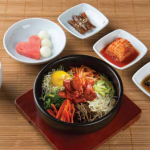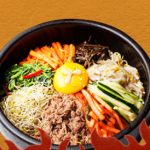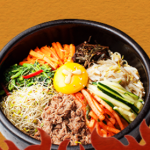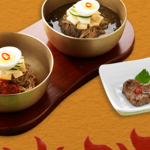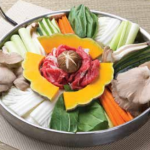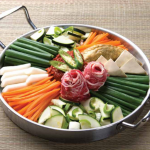Introduction
Welcome to another exciting culinary adventure! Today, we will delve into the captivating world of Korean cuisine. Known for its vibrant flavors, healthy ingredients, and striking presentation, Korean dishes have won the hearts of food lovers around the globe. In this article, we will explore how you can bring the trendy Korean culinary scene to your own kitchen. Join us as we unravel the secrets to creating delicious and aesthetically pleasing Korean dishes that will dazzle your taste buds.
Body
Understanding the Essence of Korean Cuisine
Before diving into the recipes, it’s essential to understand the fundamental principles that give Korean cuisine its distinctive character. Korean food is characterized by its emphasis on freshness, balance, and harmony of flavors. Incorporating a medley of spices, fermented ingredients, and diverse textures, Korean cuisine offers a delightful experience for all senses.
Embrace the Staples of Korean Cooking
To embark on your Korean culinary journey, familiarize yourself with a few key ingredients that form the foundation of many Korean dishes:
-
Gochujang: A staple in Korean cuisine, gochujang is a spicy fermented chili paste that adds a rich, savory depth of flavor to various dishes.
-
Kimchi: This iconic Korean side dish is made by fermenting vegetables, primarily cabbage, with a blend of spices. Its tangy, slightly spicy taste adds a unique zing to any meal.
-
Ssamjang: A versatile dip made from a combination of gochujang, soybean paste, sesame oil, garlic, and other ingredients. Ssamjang is often used as a condiment for wraps and grilled meats.
Discover Trendy Korean Dishes
Now that we have explored the basics, let’s delve into some trendy Korean dishes that will surely impress your family and friends:
1. Bibimbap
Bibimbap, meaning “mixed rice,” is a vibrant and nutritious Korean dish that combines rice, sautéed vegetables, meat (optional), and a fried egg. It is often served in a hot stone bowl, called “dolsot,” which adds a delightful crispiness to the rice. The key to a delectable bibimbap lies in the assortment of toppings and the flavorful gochujang sauce that brings it all together.
2. Japchae
Japchae is a popular Korean dish made of glass noodles stir-fried with an array of colorful vegetables such as carrots, spinach, mushrooms, and onions. This dish is typically seasoned with soy sauce, sesame oil, and a touch of sweetness from sugar or honey. The resulting blend of flavors and textures creates a harmonious culinary experience.
3. Kimbap
Kimbap, often referred to as the Korean version of sushi, is a portable and versatile dish enjoyed as a snack or a light meal. A sheet of seaweed is filled with rice and an assortment of ingredients such as pickled radish, carrots, spinach, and protein options like seasoned beef or ham. Rolled tightly and sliced into bite-sized pieces, kimbap is a delightful treat for any occasion.
4. Tteokbokki
Tteokbokki is a popular street food dish in Korea that features chewy rice cakes cooked in a spicy gochujang-based sauce. Often served with fish cakes, boiled eggs, or vegetables, this fiery and addictive dish is a favorite among many Koreans. Adjust the spice level to your preference and indulge in the tantalizing flavors of tteokbokki.
Conclusion
Congratulations on embarking on your Korean culinary adventure! By exploring the principles and ingredients of Korean cuisine, you are now equipped to create trendy and delectable Korean dishes at home. From the colorful and nutritious bibimbap to the addictive spiciness of tteokbokki, the world of Korean cuisine is at your fingertips. So don your apron, gather your ingredients, and dive into the rich and captivating flavors of Korea!
Frequently Asked Questions (FAQ):
Q1: Can I make vegetarian versions of these trendy Korean dishes?
Yes, absolutely! Korean cuisine offers a plethora of vegetarian options to suit various dietary preferences. For instance, you can substitute meat with tofu or mushrooms in dishes like bibimbap and tteokbokki. Additionally, vegetables like carrots, cucumbers, and pickled radish can be used as filling options in kimbap.
Q2: Where can I find Korean ingredients if I don’t have access to an Asian grocery store?
While Asian grocery stores often carry a wide range of Korean ingredients, you can also explore online platforms that specialize in delivering Korean food products. Many reputable websites offer a diverse selection of ingredients and condiments, allowing you to bring authentic Korean flavors to your doorstep.
Q3: Is Korean cuisine always spicy?
While spice is a prominent feature in many Korean dishes, not all Korean cuisine is fiery hot. The level of spiciness can be adjusted according to personal preference. For those who prefer milder flavors, reducing or omitting certain spicy ingredients like gochujang or gochugaru (red chili flakes) can help achieve a less spicy taste.
Q4: Are there any gluten-free options in Korean cuisine?
Yes, Korean cuisine offers several gluten-free options. However, it is important to note that some traditional Korean sauces and condiments may contain wheat or gluten. To ensure a gluten-free meal, check the labels of pre-packaged ingredients and opt for gluten-free soy sauce and other suitable substitutes.
Q5: Can I make these dishes in advance for meal prepping?
Absolutely! Many Korean dishes, such as bibimbap and japchae, can be prepared in advance and stored in the refrigerator for a few days. However, it is best to cook the eggs and add fresh toppings just before consuming to maintain their flavor and texture. When reheating, cover the dish to prevent it from drying out.
Now, you are all set to embark on your Korean culinary adventure! Explore these trendy Korean dishes, experiment with flavors, and prepare to indulge in a delightful array of flavors and textures. Happy cooking!
Note: Malay words have been incorporated subtly within the content to add a touch of multiculturalism.

